Free live stream with Thich Nhat Hanh!
Thich Nhat Hanh has spent decades exploring the power of the present moment to nourish oneself and others. In the present moment alone, he teaches, can we let go of ideas that lead to suffering, rest and renew ourselves, and discover the many conditions of happiness that are already here before us.
Now, you are invited to join one of the most respected teachers of our time in A Free Live Online Event with Thich Nhat Hanh: Refreshing Our Hearts: Touching the Wonders of Life. Streaming live from the historic Paramount Theatre in Oakland, California, on Saturday, October 26, at 6 pm ET (GMT-4), this two-hour video program will illuminate how the practice of mindfulness can radically transform our lives and our world.
Featuring the monks and nuns of Plum Village performing song and monastic chant, guided meditation and dharma teachings with Thich Nhat Hanh, and more, this rare event will bring you into the company of thousands around the globe as we open together to the joy and fulfillment that can be found within every moment.
Can’t make the live event? An on-demand edition will be available within three business days of the event’s conclusion.

The Self-Acceptance Project… wrap-up with Tami Simon
I loved hosting The Self-Acceptance Project, a free 23-part online video series in which I interview leading spiritual teachers, psychologists, writers and researchers about how to be kind and compassionate towards ourselves in any and every situation. I learned so much from hosting this series that I even created a final wrap-up video in which I share the seven key insights that were true “take-aways” for me. If you are interested, you can watch the video here.
One of the most important lessons that I learned from the series was how important it is to TURN TOWARDS difficult emotional experiences instead of our habitual response of turning away (turning to distraction or food or our iphone or other ways we self-medicate and try to numb ourselves). This is a teaching that I hear so often in Sounds True recordings and books (and as an aside, there are a number of self-acceptance themed titles and programs on sale this week – visit our self-acceptance tools and teachings page).
What I find so interesting is how I continually need to be reminded to turn towards difficult feelings. It is such a natural tendency to try escape feeling terrible! Sounds True author Bruce Tift (who along with 22 other Sounds True authors is featured as part of the Self-Acceptance series) said that the reason for this is that it is actually COUNTER-INSTINCTUAL to turn towards what is difficult. Our natural animal instinct is to avoid pain, which of course makes a lot of sense. But if we are to be intimate with our emotions and therefore intimate with ourselves and intimate with the flow of life, we need to make the counter-instinctual move and turn towards what we are feeling, even if it is difficult and painful.
Okay, so let’s say we accept this basic premise. How do we do it? Many of the authors in the self-acceptance series offered the same advice, first become aware of what’s happening (for example, I am mindlessly surfing on the web but what is really going on inside me is that I feel a terrible ache in my stomach). The next step is to stay with the experience of the uncomfortable sensations. This can sometimes feel like staying with a fire that is burning on the inside. I love the phrase Bruce Tift uses for this – embodied vulnerability. We actually stay with the uncomfortable sensations and soften to the experience. When we do this, we are beginning to accept every emotional experience as part of the flow of life.
In the final episode of the self-acceptance series, I asked Sounds True listeners to write to me at acceptance@soundstrue.com about the main lessons they learned from the series. To date, I have received dozens and dozens of letters about how life-changing the program has been for people. One of the main themes I have heard is how NORMALIZING it has been to hear renowned spiritual teachers and esteemed psychologists talk about their own struggles with self-acceptance (of course, I got personal in the interviews because that’s where so much of the action and learning comes from). Seeing the universality of the challenge helped people to be kinder to themselves. Yes, we can release ourselves from being hard on ourselves about being hard on ourselves!
As I said, I loved hosting this free series, and I encourage you to check it out.

Do you really know whether your partner understands what you are saying?
Human communication, even on a good day, is really terrible. It really is. We misunderstand each other much of the time.
Do you really know whether your partner understands what you are saying? Does your partner get the nuances or understand the purpose of the words you are using? Do you think they know exactly how you feel about your words or the meaning of the words? When you’re listening to someone, do you think you really understand them? Do you understand their mind? Their context? More often than not, you are approximating each other. You’re getting close.
Most of our communication is implicit, nonverbal. Our verbal communication, which we all love and adore and depend on, is really the culprit. It gets us into a lot of trouble.
When you were dating, I’m sure you were much more careful about the words you used. How careful are you now? Many couples grow sloppy with each other in terms of their verbal communication. They take shortcuts because they think they know each other.
You’re probably taking a lot of shortcuts, assuming your partner understands the meaning of your words, and you’re getting into trouble. Do you even have each other’s attention when you are communicating? Many times, you don’t. You both are busy, you are moving, and your lives are only getting busier. And then you find yourselves saying, as many couples do, “Oh, it’s my partner’s problem. They’re not listening.” Right?
When it comes to communication, you both must take responsibility for making sure that your speech is clear and understood by the other person. As you will read in this section, just because you say something, doesn’t mean your partner is translating it as you intend.
Here’s an example:
Partner A: I want more intimacy in our relationship.
Partner B: I want that, too!
The problem here is that to Partner A intimacy means “more sex.” Partner B, on the other hand, thinks that agreeing to intimacy will mean more interpersonal talk. What is more is that sex actually means “only intercourse,” and interpersonal talk specifically means “more questions about how I’m doing.” That is how we talk to each other—as if the other person knows exactly what we mean. Much of the time, we don’t even know exactly what we mean.
Remember the good old days (of course you don’t) when speech was simpler? We would just say, “Duck!” or “Eat!” or “Sleep!” or “Run!” or “Lion!” Fast forward to today’s linguistic complexities and consider for a moment all the nuances in our talk, all the lingo, all the changing meanings for regular words. Take the word sick, for example. Today it could mean physically ill, mentally ill, disgusting, or amazing. And the language couples use with each other can seem even more confusing. “I want to know you deeply” could mean many different things. “I want you to show me your soul” could make a person’s head spin. “I want you to say what you really feel” can, for some, seem like a trick or an insurmountable task. We use a great many words and phrases that mean a great many things, none of which partners clarify with each other. This is a terrific error.
The human brain is always trying to conserve energy; it does as little as possible until it must. Most people, particularly partners, will treat clarification as unnecessary and, in fact, frustrating. “You should know what I mean,” a partner might say. “My meaning is obvious.” Or, “Everyone knows what that means.” Both speaker and listener feel persecuted by the chasm between meaning and understanding. Minds misattune, which leads to heightened arousal (faster heartbeat, higher blood pressure), which leads to threat perception, which leads to fight, flight, or freeze.
Rinse and repeat.
Check and Recheck
This common and frankly annoying error is easily avoidable by returning to the formality likely present at the beginning of the relationship. Check in with simple, nonthreatening questions or requests:
- “Are you saying . . . ?”
- “I want your eyes because this is important . . .”
- “Let me make sure I understand . . .”
- “Say back what you heard . . .”
- “Let me repeat that.”
- “What do you think I meant by . . . ?”
- “We may not be talking about the same thing. Are you saying . . . ?”
Checking and rechecking is vital to daily governance and the proper running of a two-person system. If you were two astronauts communicating out in space while tethered to the mothership, would you be incredibly careful with your communication? You bet you would. Your lives would be at stake. If you were two generals deciding a war plan, would you talk in shorthand or assume you were on the same page? If you did, people would die. You are no different. If you and your partner continue to use shoddy communication to share information, your relationship will suffer badly.
These errors, if repeated again and again, go right into your respective personal narratives about what’s wrong with the other partner and why you’re unhappy. Remember, our personal narratives form to protect our interests only and are almost always based on faulty data—like errors in communication!
Be orderly. Be precise. Be responsible. Be a two-person system.
This excerpt is adapted from In Each Other’s Care: A Guide to the Most Common Relationship Conflicts and How to Work Through Them by Stan Taktin, PsyD, MFT.
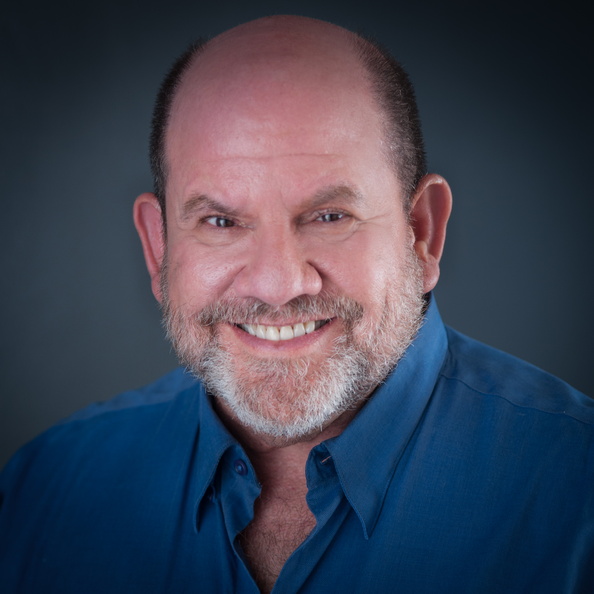
Stan Tatkin, PsyD, MFT, is a clinician, researcher, teacher, and developer of A Psychobiological Approach to Couple Therapy® (PACT). He has a clinical practice in Calabasas, California, and with his wife, Dr. Tracey Tatkin, cofounded the PACT Institute for the purpose of training other psychotherapists to use this method in their clinical practices. For more information, visit thepactinstitute.com.
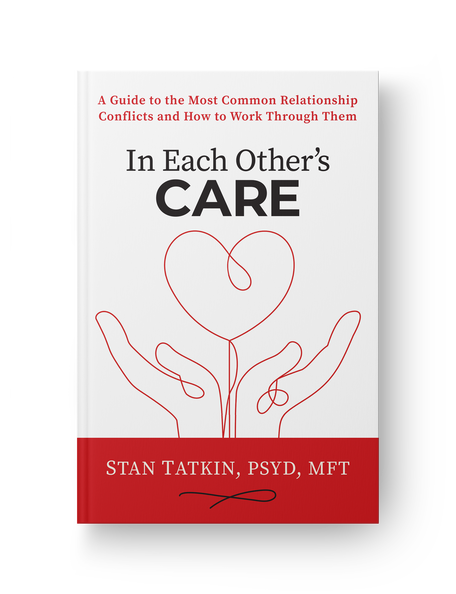
Learn More
Amazon | Barnes & Noble | Bookshop | Sounds True
Kintsugi: Filling in the Cracks of Your Life with Gold

The time has come to get started on the biggest work you will create in your life, the most important house you will ever own, the home of your soul. Let’s rebuild your life with strong materials of confidence, self-esteem, and courage. I want you to be a free and confident person, and to achieve that, we need to work hard.
Begin by getting to know yourself. You have no idea what you are like or what you are capable of achieving. During the most vulnerable years of your life, people made you believe that you weren’t capable, that you couldn’t do things, that you didn’t know how to, and that you were worthless. They ignored you, overlooked your achievements, and punished you, and all that has wreaked havoc on your self-image. Look for silence and try to reconnect with your essence. Discover yourself, and explore yourself. It’s no easy task, I know, but that’s no reason to avoid it. Observe yourself without judgment, and get to know yourself a little better each day, the same way you would with a new friend, car, or house.
Start analyzing. Stop being afraid, stop worrying, and stop running away without looking back. Forget about fear, stop reacting, and start analyzing. That is the key: to analyze instead of reacting. Life is a dynamic process, which is good news because you can grow, learn, change, and above all gain confidence.
Contextualize what happens to you without rushing in your appraisals. Now you are capable of identifying when you are carrying out partial appraisals based on fear or a negative self-image that do nothing but activate your alarm systems and generate anxiety for you. The first step toward gaining confidence is understanding, the second is detection, and the third is management. Engage in rational thinking to avoid the tunnel vision effect that a closed and imperceptive mind has tried to contaminate your soul with. Simplify reality, and eliminate the fear factor. I propose an exercise of imagination. Imagine you are at a meeting expounding your point of view on a project, and that suddenly your boss takes out a piece of paper and starts taking notes. You don’t actually know what they are writing, but if you feel afraid, you will believe they are taking notes on the things they didn’t like, when you don’t really know. Perhaps they loved it. Or perhaps they have simply remembered a task they still have to do. So when you don’t know something for sure, don’t rule out any of the options, either negative or positive. This, precisely, is what tunnel vision consists of.
You have many more virtues than the ones you imagine, and you are capable of many more things than you may believe.
Learn more about this powerful practice of healing trauma in Kintsugi: The Japanese Art of Embracing the Imperfect and Loving Your Flaws by Tomás Navarro.

 Tomás Navarro is a psychologist who loves people and what they feel, think, and do. He is the founder of a consultancy practice and center for emotional well-being. He currently splits his time between technical writing, training, consultancy, conferences and advisory processes, and personal and professional coaching. He lives in Gerona and Barcelona, Spain.
Tomás Navarro is a psychologist who loves people and what they feel, think, and do. He is the founder of a consultancy practice and center for emotional well-being. He currently splits his time between technical writing, training, consultancy, conferences and advisory processes, and personal and professional coaching. He lives in Gerona and Barcelona, Spain.
Read Kintsugi today!
Sounds True | Amazon | Barnes&Noble | IndieBound
Resilience: Applying Brain Change to Cope with Life’s Challenges More Skillfully
When we learn to practice these five skills, we strengthen our resilience in exactly the way the brain learns best—small experiences repeated many times. We can develop new ways to respond to pressures and tragedies quickly, adaptively, effectively.
Let the Dark Places Be Teachers
FIND THE SOURCE
This is a tender exercise, a tracing of pain, the path back to the deepest wound. For myself, a huge hurt that I carry is often the source of great realizations and growth. I’ve worked with many different types of therapy for years to figure out where my pain stems from, and my curiosity has been my greatest guide in this effort. I want to know why I am the way I am, and my trauma informs so much of my mindset. Do you know where your pain comes from? Does it point back to a certain occurrence? Do you have only a vague idea, a slight memory, that seems to be the source? What do you do to familiarize yourself with the hurt you carry?
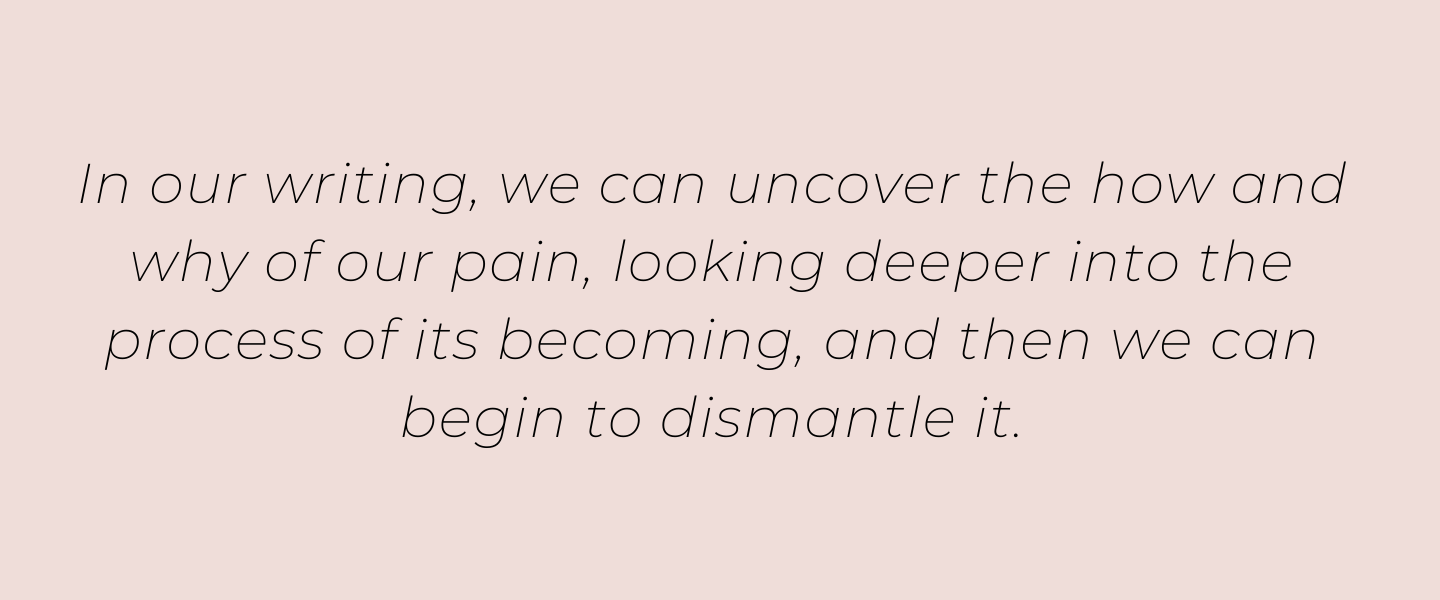
There are countless, well-trusted methodologies to help us become acquainted with our pain, and when we dig into this work, the cave of our understanding becomes incredibly deep.
I like to turn my pain into a guide. I follow its directions, meditating on where it all began. It’s at these starting points where I find the most potent feelings. My heartbreak from a failed relationship will often give me a chance to let out my sadness in verse, but not before I try to unpack the whole story. Only when I attempt to understand the many aspects of this failed relationship can I fully feel it and pay tribute to it. I begin this kind of investigation by rambling in my journal. Then, if I feel inclined, I might pull the heart of my understanding into poetic form. I recently wrote a book of poetry called Help in the Dark Season, which focuses on my childhood trauma, the way it affects my adult relationships, and the modes of healing that have helped me grow. Writing this book was extremely hard, but after I finished, I felt like I’d turned coal into gold. I pulled back the curtain inside myself and let light do its thing. Now I not only get to feel the inner effects of my work but I’m also able to witness the importance of sharing this book with others, the way my words act as a key to unlock their personal process of healing. The result of this revealing has been an honesty and a newness that I couldn’t have reached without the alchemy of writing poetry.
I urge you to do this hard work with your trauma, if you’re able. Give yourself permission to move into the realm of blame. Maybe move beyond it toward forgiveness.
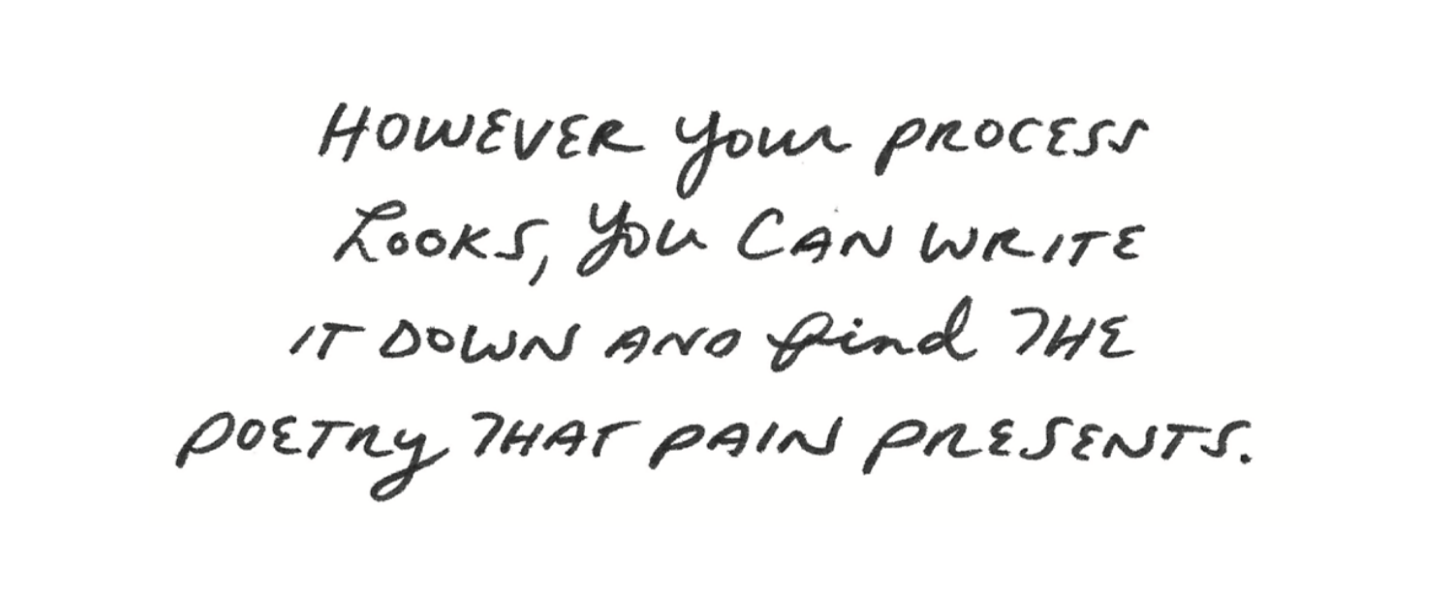
Our traumas create our fears, and our responses to these fears can be as poetic and beautiful as we make them. Let your pain be a source of inspiration, turn this heavy load into poetry, own it, use it, and take as much from it now as it has taken from you in the past.
Close your eyes and meditate on the hidden ache you carry. I like to start with my childhood because that’s what makes sense for me, but you can start anywhere along your timeline. Do you see any images attached to your discomfort? Can you try and put words to your grief and your loss? Who hurt you? What was their childhood like? Why did they do what they did? Make use of the pain of being alive. See the universality in whatever caused you harm, and focus on the connection to others who have survived similar experiences. When I sit with my wounds, I find my resilience, and that makes me want to linger there, gather up the lessons left in the aftermath, and use them for my own creation. Writing about my pain enables me to claim it as my own, and this ownership is empowering.
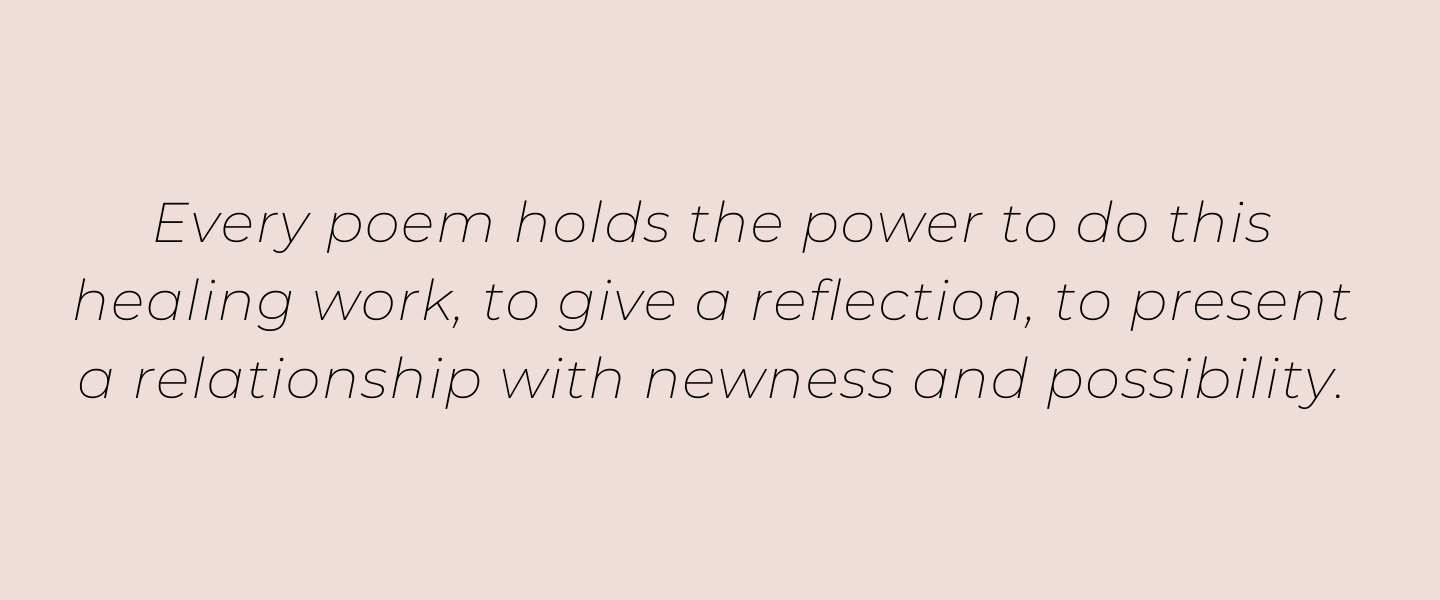
How can you show your reader your personal methods of self-care in a poetic way? Maybe start by writing a list of poems or even song lyrics that have been healing for you in the past. I have poems dog-eared and underlined in every book on my shelf, and I’ll pull them out in a moment of need. They’re my reminders that yes, it is indeed hard to be alive for everyone.
This is an excerpt from Every Day Is A Poem: Find Clarity, Feel Relief, and See Beauty in Every Moment by Jacqueline Suskin.

Jacqueline Suskin has composed over forty thousand poems with her ongoing improvisational writing project, Poem Store. She is the author of six books, including Help in the Dark Season. Her work has been featured in the New York Times, the Atlantic, and Yes! magazine. She lives in Northern California. For more, see jacquelinesuskin.com.
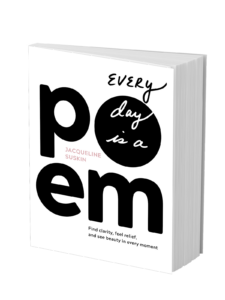
Sounds True | Amazon | Barnes & Noble | Indiebound | Bookshop



